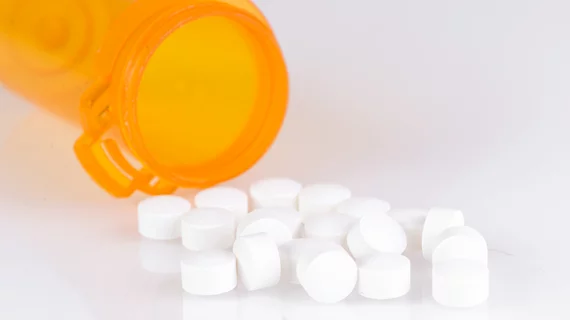Opioid use disorder meds boost odds of recovery in endocarditis patients
Drugs used to treat opioid use disorder may also be successful in improving the health outcomes of patients admitted to the hospital for injection drug use-associated endocarditis, according to research out of Boston.
It’s not a shock that today, as the U.S. struggles to fight a deep-seated opioid crisis that claims the lives of tens of thousands each year, many people who present to the hospital with endocarditis developed the condition as a result of injection drug use. Joshua Barocas, MD, and colleagues at Boston Medical Center wrote in Clinical Infectious Diseases that endocarditis is becoming increasingly common among young injection drug users, upping their risk for death, lengthy and repeat hospitalizations and valve replacement surgery.
Data suggests the three existing medications approved by the FDA to treat opioid use disorder—methadone, buprenorphine and naltrexone—are underused in patients with the condition, despite evidence that they’re effective in improving mortality and retention in care. Barocas et al. undertook an analysis of data from the MarketScan Commercial Claims and Encounters database to determine how often those meds are prescribed to adults with opioid use disorder.
The team considered patients who were over 18 and hospitalized for endocarditis between 2010 and 2016. The cohort ultimately included 768 individuals who were on average 39 years old.
Barocas and colleagues said that only 6% of patients—44 people—received medication to treat opioid use disorder in the 30 days following an index hospitalization, but receiving that medication cut those patients’ risk for rehospitalization in half compared to their peers. There were 41 overdoses within 30 days in the group of patients who didn’t receive medication.
The authors reported buprenorphine was easily the most popular drug on the part of physicians—of the 44 patients who received medication for opioid use disorder, 41 of them were prescribed buprenorphine.
“This is among the first data to show the life-saving impact that medications to treat opioid use disorder can have on patients with injection drug use-related endocarditis,” Barocas said in a release. “Given the increase in injection drug use-related infections, it is critical to treat the underlying opioid use disorder, which often leads to these serious complications and inpatient hospitalizations.
“We need to ensure that patients have access to the evidence-based treatment and services that will help reduce their risk of infection and overdose, as well as help them achieve long-term recovery.”

